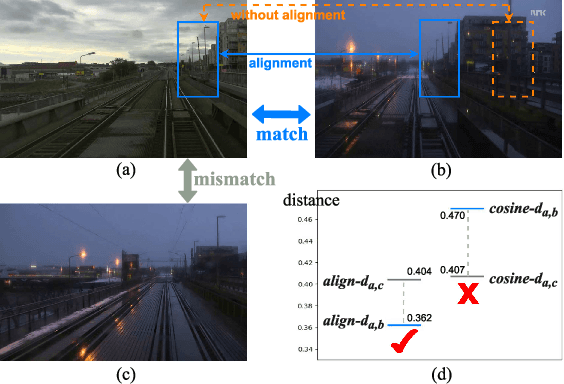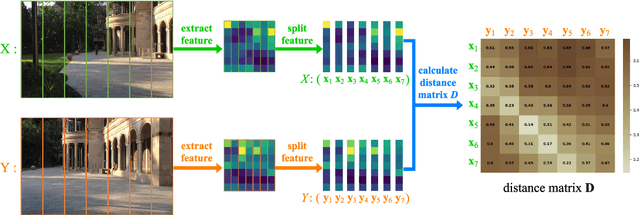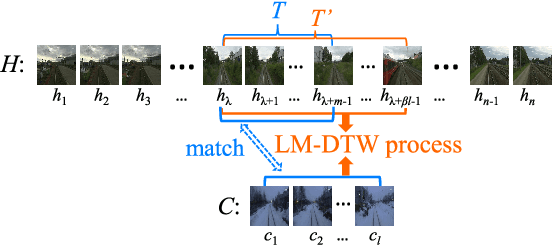Baifan Chen
AANet: Aggregation and Alignment Network with Semi-hard Positive Sample Mining for Hierarchical Place Recognition
Oct 08, 2023Abstract:Visual place recognition (VPR) is one of the research hotspots in robotics, which uses visual information to locate robots. Recently, the hierarchical two-stage VPR methods have become popular in this field due to the trade-off between accuracy and efficiency. These methods retrieve the top-k candidate images using the global features in the first stage, then re-rank the candidates by matching the local features in the second stage. However, they usually require additional algorithms (e.g. RANSAC) for geometric consistency verification in re-ranking, which is time-consuming. Here we propose a Dynamically Aligning Local Features (DALF) algorithm to align the local features under spatial constraints. It is significantly more efficient than the methods that need geometric consistency verification. We present a unified network capable of extracting global features for retrieving candidates via an aggregation module and aligning local features for re-ranking via the DALF alignment module. We call this network AANet. Meanwhile, many works use the simplest positive samples in triplet for weakly supervised training, which limits the ability of the network to recognize harder positive pairs. To address this issue, we propose a Semi-hard Positive Sample Mining (ShPSM) strategy to select appropriate hard positive images for training more robust VPR networks. Extensive experiments on four benchmark VPR datasets show that the proposed AANet can outperform several state-of-the-art methods with less time consumption. The code is released at https://github.com/Lu-Feng/AANet.
STA-VPR: Spatio-temporal Alignment for Visual Place Recognition
Apr 09, 2021



Abstract:Recently, the methods based on Convolutional Neural Networks (CNNs) have gained popularity in the field of visual place recognition (VPR). In particular, the features from the middle layers of CNNs are more robust to drastic appearance changes than handcrafted features and high-layer features. Unfortunately, the holistic mid-layer features lack robustness to large viewpoint changes. Here we split the holistic mid-layer features into local features, and propose an adaptive dynamic time warping (DTW) algorithm to align local features from the spatial domain while measuring the distance between two images. This realizes viewpoint-invariant and condition-invariant place recognition. Meanwhile, a local matching DTW (LM-DTW) algorithm is applied to perform image sequence matching based on temporal alignment, which achieves further improvements and ensures linear time complexity. We perform extensive experiments on five representative VPR datasets. The results show that the proposed method significantly improves the CNN-based methods. Moreover, our method outperforms several state-of-the-art methods while maintaining good run-time performance. This work provides a novel way to boost the performance of CNN methods without any re-training for VPR. The code is available at https://github.com/Lu-Feng/STA-VPR.
* Accepted for publication in IEEE RA-L 2021
 Add to Chrome
Add to Chrome Add to Firefox
Add to Firefox Add to Edge
Add to Edge